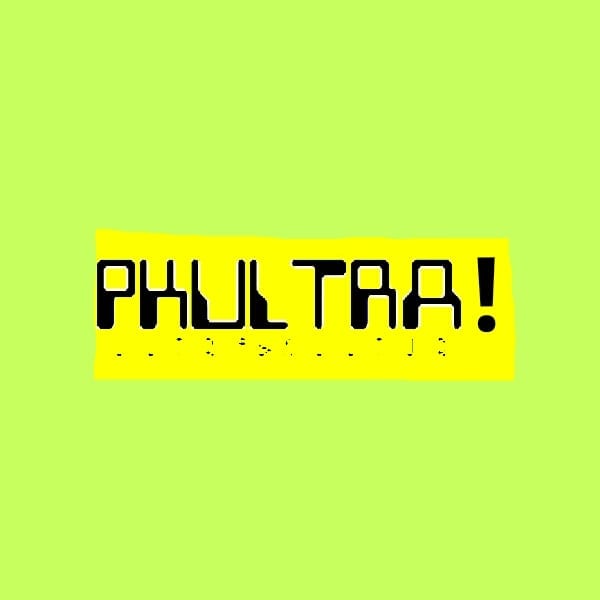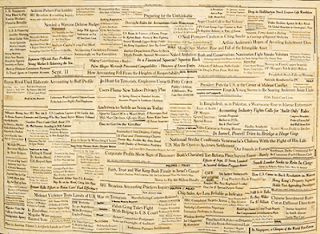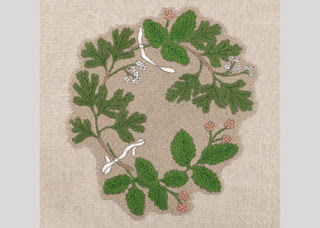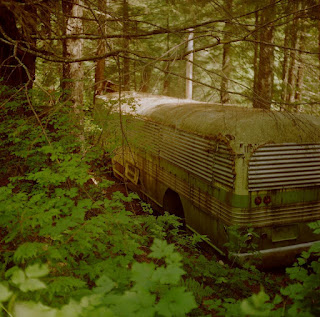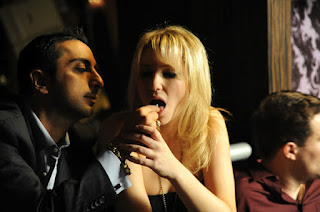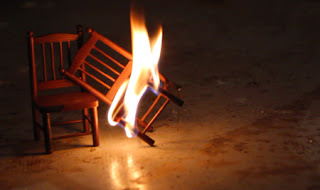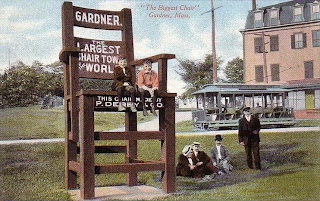With a little more than a week to go until
Hide/Seek: Difference and Desire in American Portraiture is removed from Tacoma Art Museum, I felt an urgency to convey the impressions of this very important exhibit of artwork before the images fade from easy reference.
First, we begin with the censorship of an artwork. A censorship which inflamed lifestyle and cultural circles when while exhibiting at The Smithsonian, Hide/Seek was targeted by the Catholic League and several members of Congress, which is always an enigma, the misunderstanding of art by laypeople who have the power to dictate content. We've seen it before, the usual case of finding a political football (a well made piece of art) too tantalizing to lose possession of, a political object transubstantiated from an art object. Jesse Helms and The Catholic League screeched for the removal of a video by David Wojnarowicz (pronounced voy-nah-ROH-vitch). The Smithsonian pulled a bullfighter and let the cape fly, failing to back up the exhibit when the time was right to defend the organizers and artists participating. Looking harder at Wojnarowicz' artwork critically, we see Mexico City fire eaters, amputees and other images which bring to our awareness the inhumane allegory of HIV/AIDS and how apocalyptically this disavowed virus ravaged the gay community. To my mind, Mr. Wojnarowicz is painting a picture of how cheap life is, to the public at large being kept unaware of the HIV/AIDS atrocity, a government policy that denied HIV/AIDSfor years. His finger points to those deniers. He attempts to bring to our collective attention how it all went down. Wojnarovich's video the victim of one more punitive cheap shot with the screeching of the Catholic League and those certain congressional dis-members. My take. I've pasted the salient chronology of the controversy that surrounded Hide/Seek's initial exhibition below.
Next, I must explain that I have been infatuated with the woman-child beauty of Edie Sedgwick for many years. My opportunities to commune with her likeness as a work of art has been confined to disappointingly few times Andrieu Warhola's artwork has been exhibited in the Pacific Northwest. Exactly twice to be precise, first, during Marisa Sanchez'
love fear pleasure lust pain glamour death — Andy Warhol Media Works in 2010 at Seattle Art Museum and now;
Hide/Seek: Difference and Desire in American Portraiture at Tacoma Art Museum. It was plain to all who attended and witnessed both exhibits, that I was nearly worshipping the tragic figure by undertaking an audience with Edie Sedgwick, in public, and whatever the cost to my image. I viewed both filmic portraits, as Mr. Warhola coined them, but which are popularly known as screen tests very thoroughly, at least an hour for each viewing. With relish. Build memories of her inescapable appeal. Ms. Sedgwick, sadly, died of a very treatable disease. A loss to those who knew her, and my condolences all round.
Which brings me to the enigmatic
Romaine Brooks, Self Portrait, a well-made oil painting which conveys the strength and power of it's subject, the wealthy socialite Romaine Brooks. Her kingly attire, including a fine top hat and cane, sheath Ms. Brooks in armor. Her gaze is resolute at the viewer. She is the king. We are the subject. This is a woman who will dominate her environment. The entire picture is done with a study in value toward the melancholy end of the gray scale. The landscape behind her is hauntingly familiar, as the song goes, reminiscent of some setting overlooking Puget Sound in keeping with the epoch of the composition. Gray Puget Sound or Nantucket something. But a hyptnotic attraction to this woman and her seething power. I believe I looked at this painting for about a half hour. Ask the docents at Tacoma Art Museum. A long, long look.
The conclusion to my summation of the exhibit Hide/Seekrests with
Ventriloquist, by Jasper Johns. The painting is by the great Jasper Johns, who once wrote me a reply to my inquiry for him to lecture at Form/Space Atelier “Paul, I don't do lectures. Best, Jasper Johns” on the postcard verso of a Thomas Eakins painting (Eakins is also included in Hide/Seek). The time frame for his execution of
Ventriloquist, created perhaps for my hero, Johns, the opportunity to create a therapeutic artwork, as was theorized by the curator of Hide/Seek, Jonathan Katz, in a lecture I attended on the subject of the exhibit. I have to believe the very bright and insightful Mr. Katz might of course be accurate in his reading of
Ventriloquist which is to say, nothing further need be said. To me, the making of a work of art is often the admixture of component thought processes, and even if my mark making begins at a small number of these component thought processes, the potential for proliferation and multiplication of thought processes will inevitably happen. To varnish the topcoat, Johns might have begun to paint his way out of sadness and bitter feelings, but as masterpieces will, prolonged study reveals Mr. Johns eventual victory through artistic reconciliation which happens. Happens.
Synopsis courtesy Wikipedia:
In November 2010, after consultation with Gallery director Martin Sullivan and co-curator David C. Ward but not with co-curator Jonathan David Katz,[10] G. Wayne Clough, Secretary of the Smithsonian Institution, removed an edited version of footage used in Wojnarowicz's short silent film A Fire in My Belly (available online) from the exhibit "Hide/Seek: Difference and Desire in American Portraiture" at the National Portrait Gallery after complaints from the Catholic League, Minority Leader John Boehner, Rep. Eric Cantor and the possibility of reduced federal funding for the Smithsonian.[11] The video contains a scene with a crucifix covered in ants.[12][13][14][15] William Donohue of the Catholic League claimed the work was "hate speech", against Catholics.[16][17][18][19][20][21] Gay historian Jonathan Ned Katz wrote:
In 1989 Senator Jesse Helms demonized Robert Mapplethorpe's sexuality, and by extension, his art, and with little effort pulled a cowering art world to its knees. His weapon was threatening to disrupt the already pitiful federal support for the arts. and once again, that same weapon is being brandished, and once again we cower.[10]
Response from Clough and Smithsonian
Smithsonian Secretary G. Wayne Clough later in interview states that although he stands by his decision, it "might have been made too quickly"[11] and he describes making the decision was "painful."[22] Clough mentions that because of heated controversy surrounding the footage and the possibility that it might "spiral out of control", the Smithsonian might be in the end forced to shut-down the entire "Hide/Seek" exhibition, and its "something he didn’t want to happen."[22] The "Hide/Seek" exhibition "examines representations of homosexuality in American portraiture", and Clough states "The funders and people who were upset by the decision, and I respect that, still have an appreciation that this exhibition is up. We were willing to take this topic on when others were not, and people appreciate that."[11]
I think it was very important to cut off the dialogue that was headed towards, in essence, hijacking the exhibit away from us and putting it into the context of religious desecration. This continues to be a powerful exhibit about the contributions of gay and lesbian artists. It was not about religious iconography and it was not about desecration. When you look at the news cycles that take over, their [the show's critics'] megaphones are this big [making a broad gesture] and our megaphone is this big [a small gesture]. We don't control that. And when it gets out of control, you can't get it back.
—-G. Wayne Clough[23]
Clough states "But looking back, sure, I wish I had taken more time. We have a lot of friends who felt left out. We needed to spend more time letting our friends know where this was going. I regret that."[11]
Response from artists
The curator David C. Ward said: "It is not anti-religion or sacrilegious. It is a powerful use of imagery".[10]
In response, The Andy Warhol Foundation, which had provided a $100,000 grant to the exhibition, announced that it would not fund future Smithsonian projects, while several institutions, including SFMOMA and Tate Modern, scheduled showings of the removed work.[24][25]
On December 2, 2010, protesters against the censorship marched from the Transformer Gallery,[26][27][28] to the National Portrait Gallery. The art work was projected on the building.[29][30][31] On December 5, Michael Blasenstein and Michael Dax Iacovone were detained and barred from the gallery for holding leaflets.[32][33] On December 9, National Portrait Gallery Commissioner James T. Bartlett resigned in protest.[34] The artist A. A. Bronson sought to withdraw his art from the exhibit, with support from the lending institution, the National Gallery of Canada,[35] unsuccessfully as of December 20.[36] The curators appeared at a forum at the New York Public Library.[37][38][39] A protest was held from the Metropolitan Museum of Art to the Cooper-Hewitt Museum.[40][41][42] On December 15, a panel discussion was held at the Museum of Fine Arts, Houston.[43] On December 20, a panel discussion was held at the Washington, D.C. Jewish Community Center.[44][45][46] On January 20, 2011, the Center of Study of Political Graphics held a protest at the Los Angeles Museum of Contemporary Art.[47] Secretary Clough issued a statement standing by the decision, spoke at a Town Hall Los Angeles meeting,[48][49] and appeared at a public forum in April 26–27, 2011.[50][51][52][53] Several curators within the Smithsonian criticized the decision, as did critics, with Newsweek arts critic Blake Gopnik going so far as to call the complaints "gay bashing" and not a legitimate public controversy.[54]
